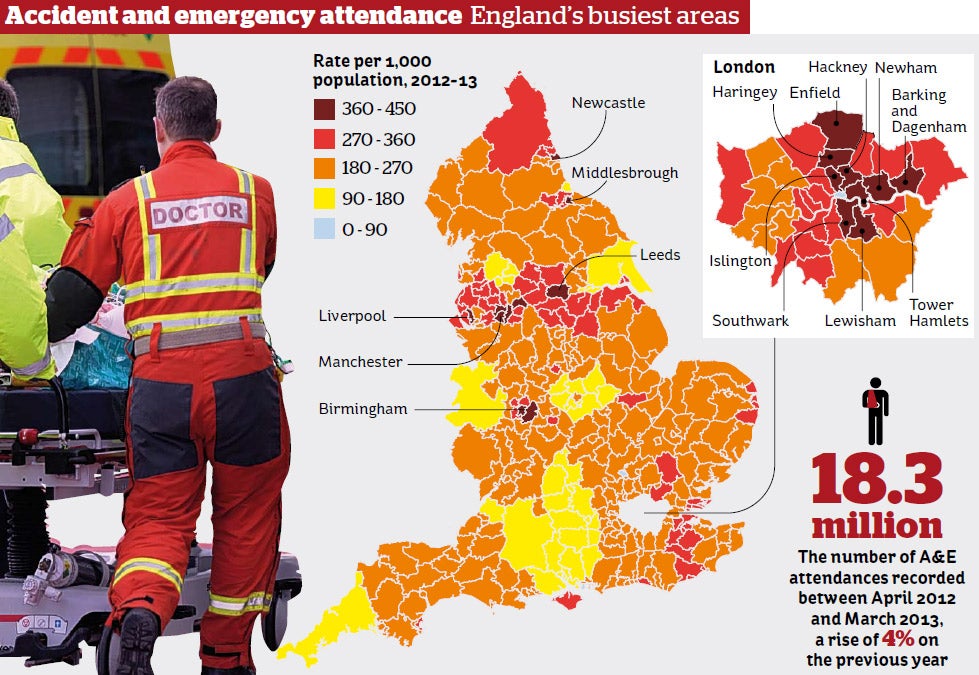A&E figures: Young patients without a GP add to growing pressure on casualty units

New NHS data for England gives the most comprehensive picture yet of the shape and scale of growing pressures on accident and emergency services. An investigation found:
* “Striking” regional differences in the number of people turning to casualty departments for care;
* More than a third of attendances at A&E ended with only advice or guidance given – a worrying sign for policymakers who want to ensure that such services are called upon only for genuine emergencies;
* The bulk of attendances were by people under 29, who made up 43 per cent of all visits to casualty.
The report is the first to give a detailed picture of A&E activity across England, and reveals sharp contrasts in use of emergency services. In London, there were 316 A&E attendances for every 1,000 people, whereas the South Central region, which includes Hampshire, Oxfordshire, Berkshire and Buckinghamshire, witnessed only 182 attendances per 1,000 people. Higher rates of A&E attendance were also seen in other major cities.
Click image above to enlarge graphic
Throughout England, there were 18.3 million attendances at casualty units in the year to March 2013 – up by 4 per cent on the previous year. The increase was driven by improvements in data quality but also by rising demand from the ageing population, said the report by the NHS’s central database, the Health and Social Care Information Centre (HSCIC).
A spokesperson for the NHS in London said the capital’s high rates of attendance were a consequence of its booming population, which included many short-term residents and families that were not registered with GPs – and these often turned up at A&E units when seeing a family doctor would be more appropriate.
The spokesperson said £74m had been invested to improve capacity in casualty units, in particular by ensuring that senior doctors were available to A&E patients 24 hours a day.
Kingsley Manning, the chairman of the HSCIC, said the scale of the variation in A&E attendances was “striking”. “Policymakers and system managers will want to look at the implications of this analysis for the future management and disposition of A&E services,” he added.
The national figures reflect a year in which the pressure on England’s A&E units has become one of the most urgent issues facing the NHS. Emergency services in Wales, Scotland and Northern Ireland are also facing intense pressure, but the HSCIC’s figures cover only the English regions.
Subscribe to Independent Premium to bookmark this article
Want to bookmark your favourite articles and stories to read or reference later? Start your Independent Premium subscription today.

Join our commenting forum
Join thought-provoking conversations, follow other Independent readers and see their replies